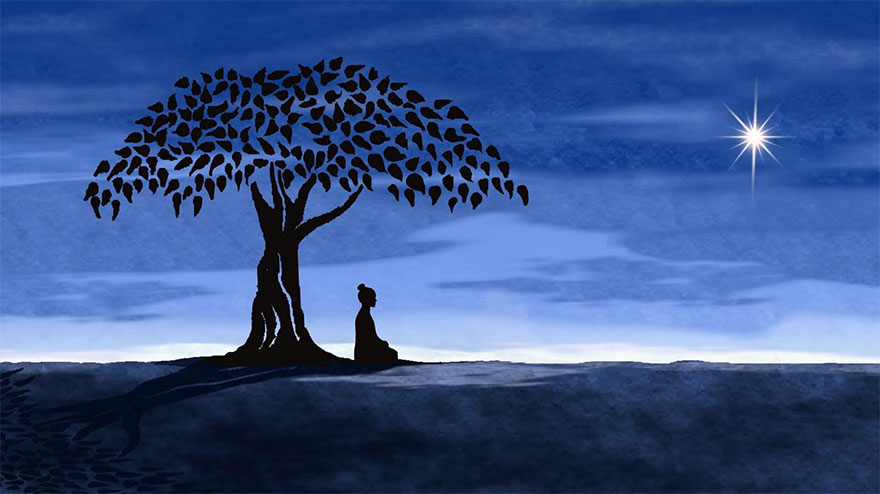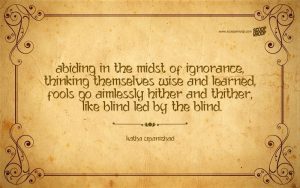Katha Upanishad in Brief Compiled, paraphrased and explained
By Sri C. Rajagopalachari (Abridged)
But Nachiketas answered:
(1)22: Even if the gods had doubts in this matter and you say that it is not easily comprehended, who then could expound it as you can, O Death, and what other boon can equal this? None, indeed.
Yama pleaded again:
(1)23: Ask for sons and grandsons who may live for a hundred years. Ask for numerous cows, elephants, and gold and horses. Ask for large tracts of land and live as many autumns as you desire.
(1)24: Or choose any boon that you can conceive equal to this, with wealth and long life. Be lord of wide dominions, O Nachiketas, I will make you the enjoyer of every desire.
(1)25: Ask freely for every rare enjoyment in the world of mortals. Here are nymphs in chariots playing on lutes, such as men have never seen. These will serve you at my command. But, do not ask me about Death.
Nachiketas was unmoved. He said:
(1)26: These ephemeral pleasures, O Death, consume the powers of the mortal’s senses. Even if they lasted all life, they are of little worth. You say you give me these gifts but being all limited by the death of the enjoyer, they remain but yours though you appear to give them away, these chariots, and song and dance. [Keep these ephemeral things for yourself. I do not care for them.]
(1)27: How can man get satisfied with wealth? Can we hold wealth when we see you? All wealth disappears on death. We live but if you command it to be. That boon alone, therefore, is worthy of being desired that I craved of you.
Yama thus failed to persuade Nachiketas to give up his enquiry into the mystery of life even for all the pleasures of this world and of the world of the gods.
“You have displayed courage and resolve,” said Yama. “There can be no better seeker than such a one, even as you stated that there can be no better instructor than myself. Listen, then, I shall explain.”
Then follows the teachings.
The first thing that man should learn in the pursuit of Truth is that the Good is something different from the Pleasant.
Yama said:
(2) 1-2: The Good is one thing, the Pleasant is another. These two-lead man to very different ends. He who chooses the Good attains happiness. He who prefers the pleasant ever loses his object. The wise are not deceived by the attractions of the Pleasant. They choose the Good. Fools are snared into the mere pleasant and perish.


